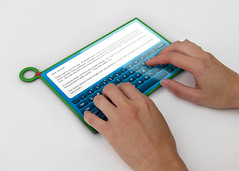I'm visiting an intermediate school in Auckland, New Zealand, observing how they are implementing e-portfolios school-wide. They have chosen to use a variety of Web 2.0 tools, but the student portfolios are stored behind passwords in a local LMS,
KnowledgeNET. Their storage in this system is limited, so they are using a variety of Web 2.0 tools to store their artifacts; they post their videos in YouTube (this is a school that doesn't block most websites) and Ning. While they can't link to work posted on a Ning page (requires an account to read the page), they can get an Embed code for a video posted on a Ning account, and can embed that video into their portfolios. The teacher sets up one account per class, and the students use that account to post their videos. Very creative!
UPDATE April 15, 2010: Ning just announced they are eliminating their free accounts. What other "free" websites will pull a Ning? How can educators predict and protect their networks and data?
 From Twitter today: "RT @chamada RT @RobinThailand: The Tweeple have spoken! A WORDLE on ePortfolios created by Twitter submissions. Thanks all. http://twitpic.com/1bv58m"
From Twitter today: "RT @chamada RT @RobinThailand: The Tweeple have spoken! A WORDLE on ePortfolios created by Twitter submissions. Thanks all. http://twitpic.com/1bv58m"![Reblog this post [with Zemanta]](http://img.zemanta.com/reblog_e.png?x-id=40f633bc-1ccc-429a-a93e-0da6e05ce413)






